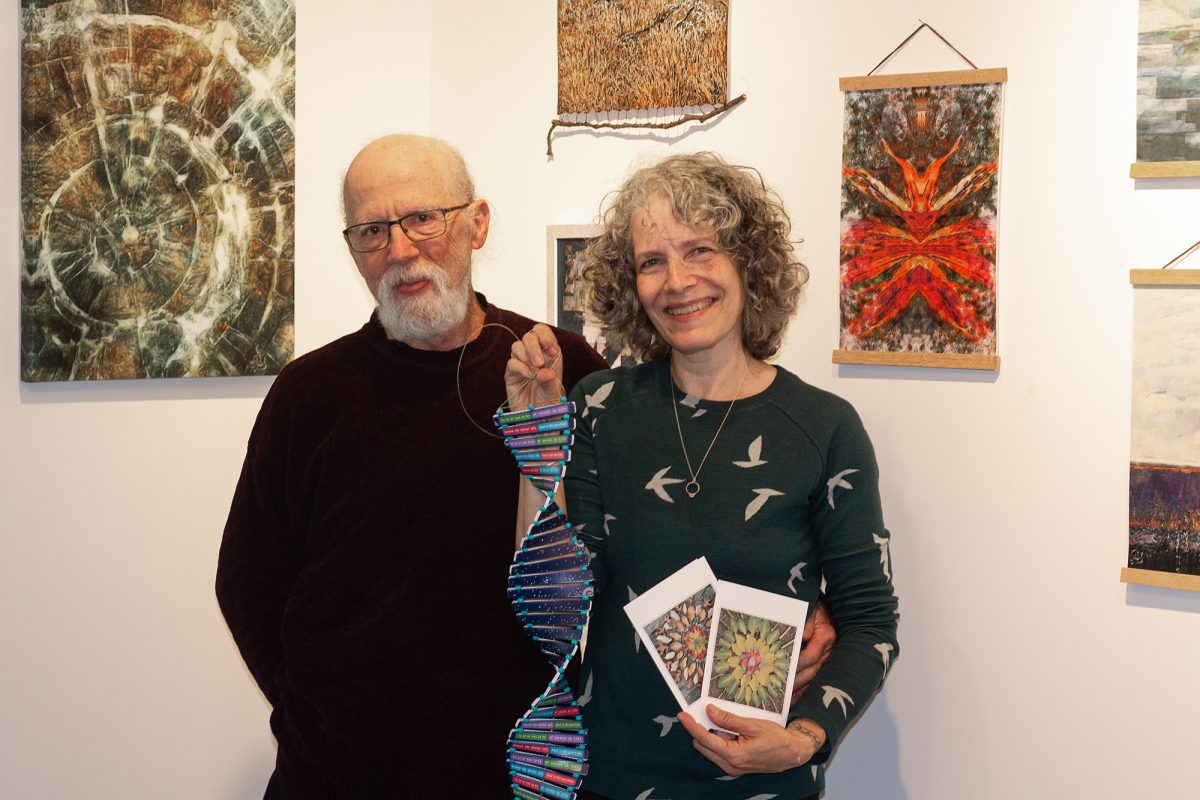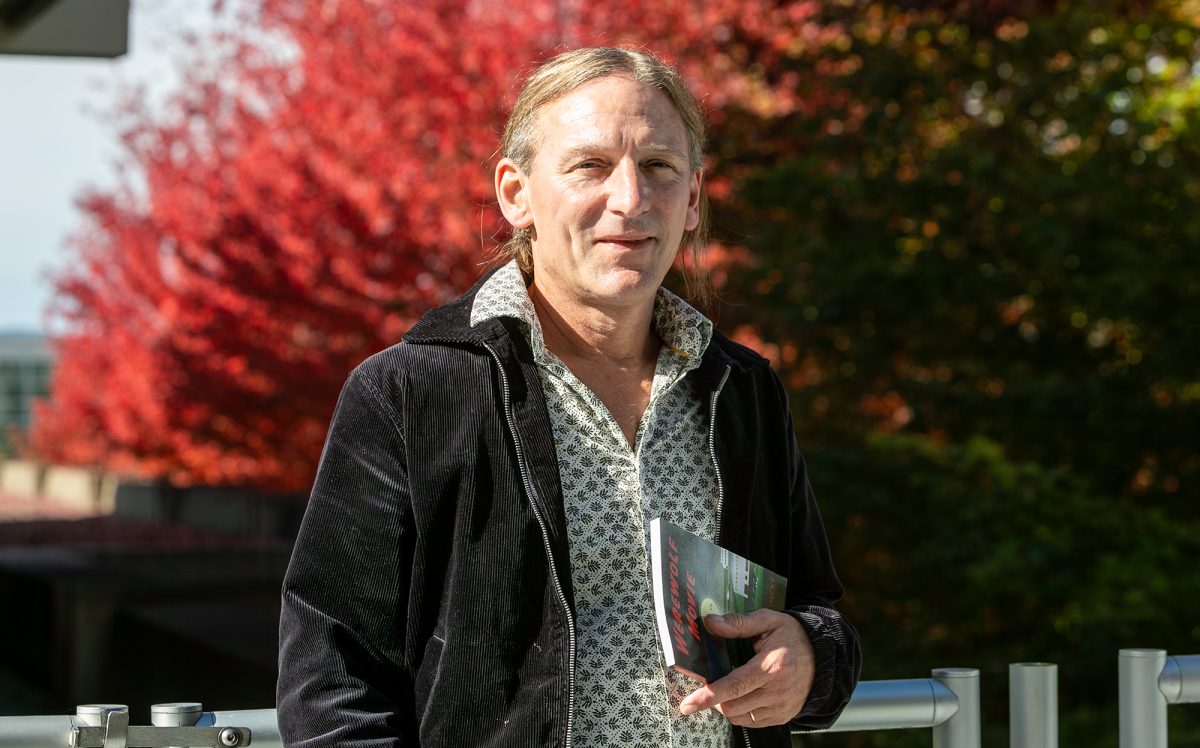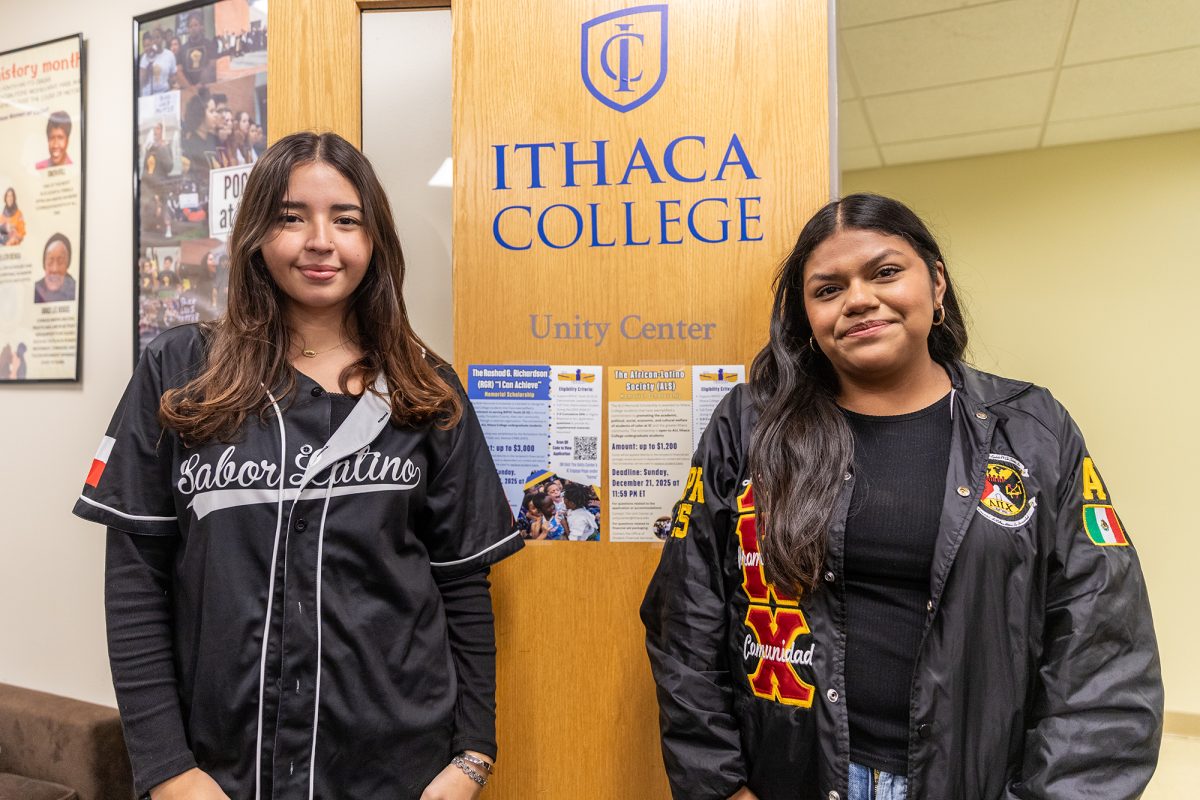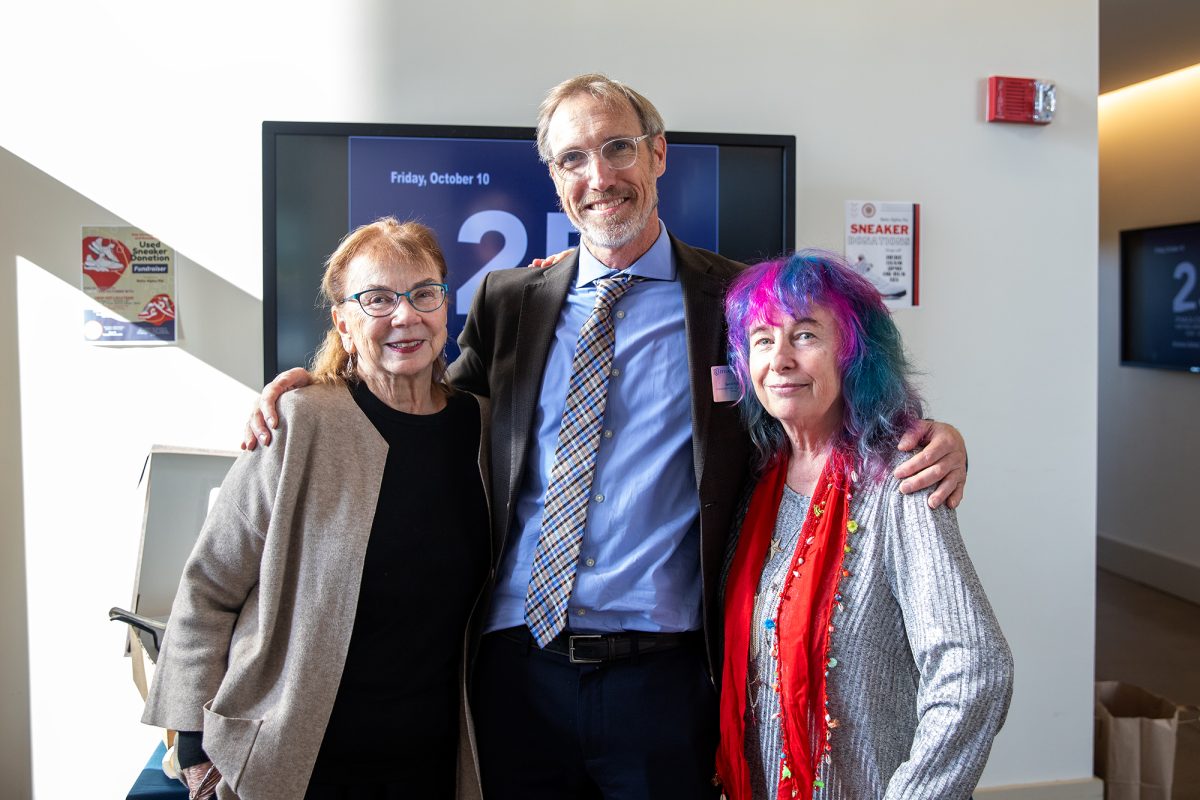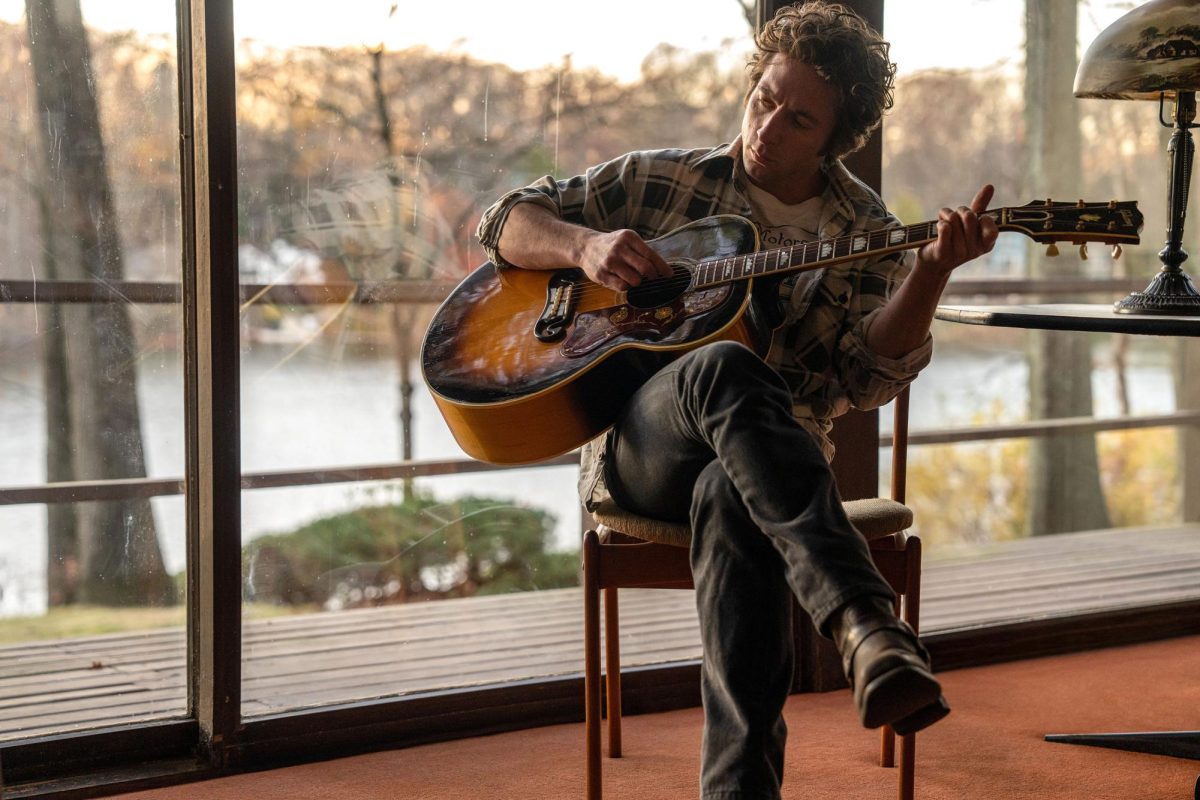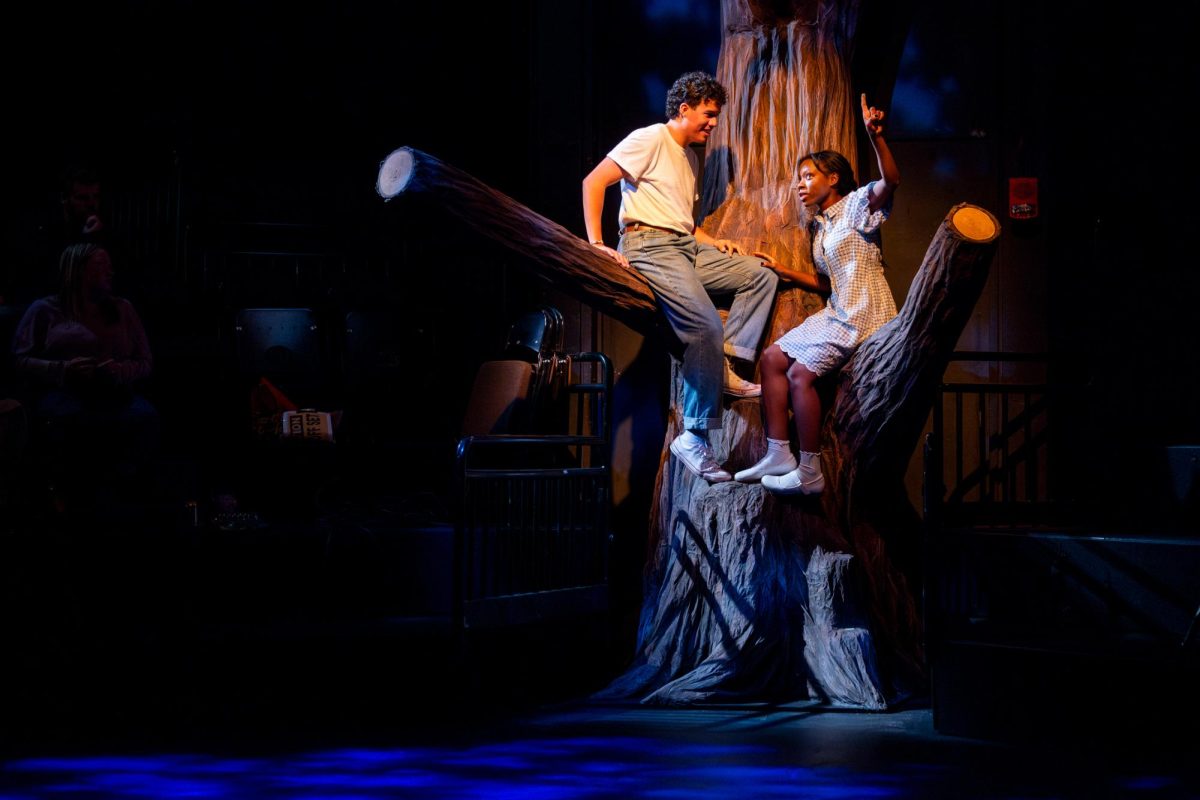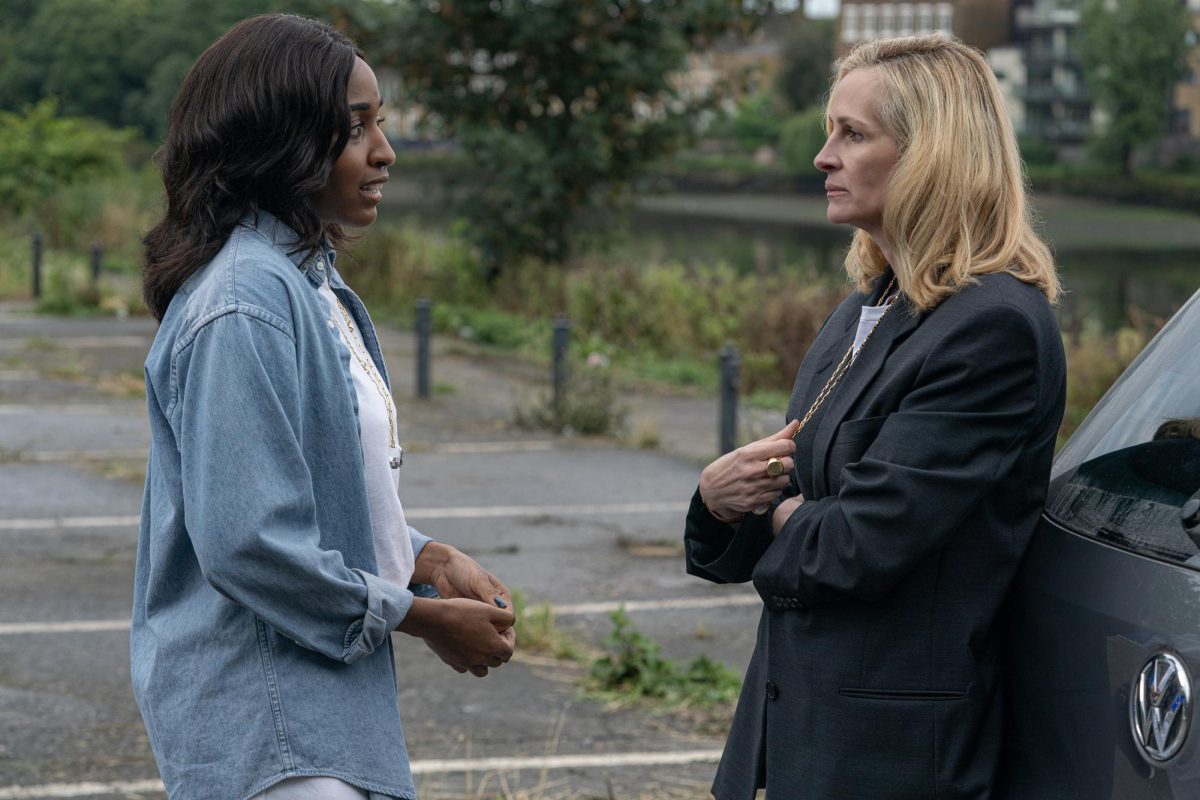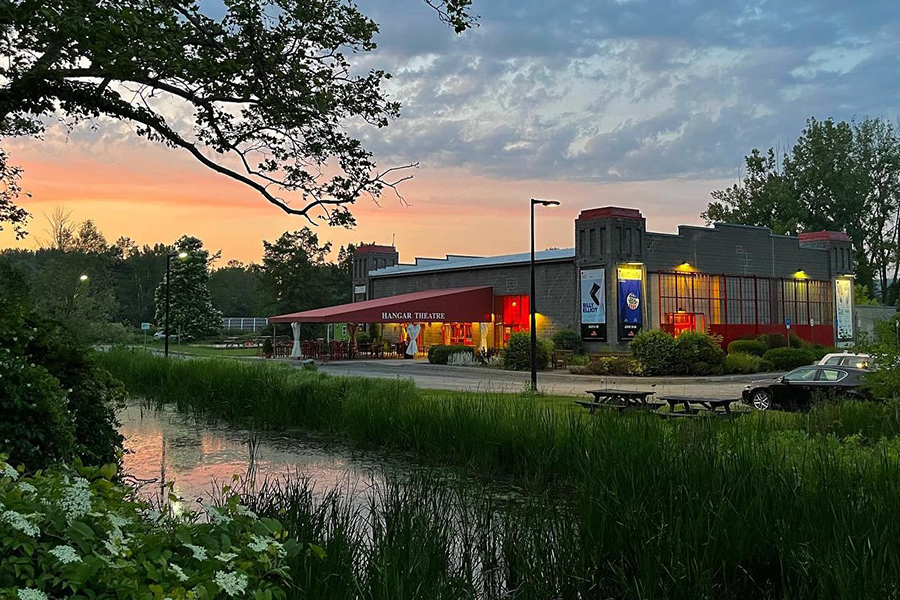Ithaca’s ecosystem is defined by its rushing waterfalls and gorges, trees planted along residential blocks, deer that trot through the brush and the bunnies that hop along at their hooves. But there is one part of this ecosystem missing: its Indigenous people.
The Gayogo̱hó:nǫʼ Nation built, lived on and cared for this land now called Tompkins County for over 10,000 years and is approaching the 250–year mark since their forced removal during the American Revolutionary War in 1779.
In Fall 2024, Trees Up Tompkins orchestrated the planting of native trees behind Emerson Hall in collaboration with college faculty and students. It worked with Stephen Henhawk, a member of the Indigenous Gayogo̱hó:nǫʼ Nation and research associate of the American Indian and Indigenous Studies Program at Cornell University, to determine which trees to plant.
On Sept. 8, The Standing Forest: A Gayogo̱hó:nǫʼ Perspective event was held at Ithaca College to introduce recordings added via a QR code in front of each tree that tell the Gayogo̱hó:nǫʼ stories of nine native trees in Henhawk’s voice. Only three of the nine trees mentioned in the recordings were planted last fall, based on which were most likely to survive: the bladdernut, red oak and sugar maple.
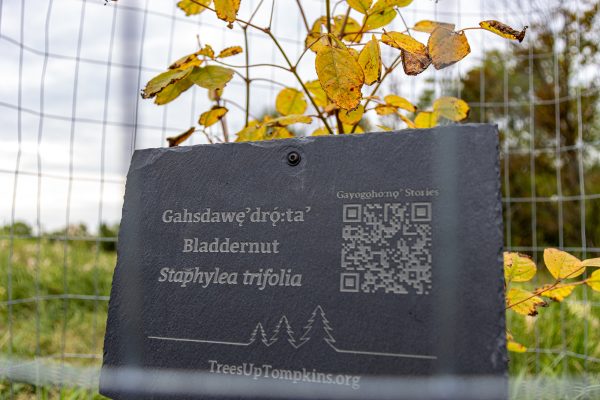
In the recordings, Henhawk said red oak wood was good for burning hot and long and the nuts can be ground into a flour. The Gayogo̱hó:nǫʼ people watched the deer drink from a branch of the sugar maple in the winter and had an understanding that it was their medicine, and so they mimicked the deer. The seeds from the bladdernut trees are used in rattles and percussion instruments and are considered a prized possession.
Jake Brenner, Ithaca College Natural Lands reserve manager and professor in the Department of the Environment, opened up the event by saying that trees create habitats for other ecosystems and live 40 times longer than humans on Earth.
“A 500-year-old tree knows things we can’t even dream of,” Brenner said.
Trees Up Tompkins has been working for the past six years to restore the habitat at Lighthouse Point, where there is a strip of public land previously overgrown with invasive shrubs. Volunteers with Trees Up Tompkins have been removing the invasive shrubs by hand and have planted over 200 native trees, including along a path where all nine of the native species Henhawk recorded stories of are planted.
According to the Gayogo̱hó:nǫʼ Learning Project’s website, which promotes becoming involved in the revitalization of Gayogo̱hó:nǫʼ culture and language, the Gayogo̱hó:nǫʼ language is spoken by fewer than a dozen people as of 2022.
John Scott, associate professor in the Department of Media Arts, Sciences, and Studies and documentary studies program director, is one of the founding members of Trees Up Tompkins. He encouraged attendees at the event to freely roam around the saplings while listening to the story recordings. Senior Yasmin Ramos Kuczynski, one of the Ithaca College student representatives for Trees Up Tompkins, wheeled a cart carrying the speakers from one tree to the next. Kennedy Laylon ’25, the other student representative, was there filming for her documentary studies practicum.
“I really feel like it’s fun to involve the student body in this, because they’re going to be around for a while,” Scott said. “And we need people who know how to take care of trees, and know the importance of them, and can maybe interact with them in a different way.”
Scott said the student representatives have helped with marketing the event and orchestrating the watering of the trees throughout the year. In an email sent out by Laylon last year, groups of students who helped plant the trees were encouraged to “adopt” one to water throughout the semester. The student representatives were also made a part of a smaller committee put together by Scott with Brenner, Bradley Rappa, associate professor in the Department of Media Arts, Sciences, and Studies and Michael Smith, professor in the Department of History, to help facilitate the events held on campus.
Laylon said that community was something she didn’t realize was such an integral part of the event last year.
“Just having people from your local community, and growing a community of people who care about the environment and want to maintain the space around them, so that you’re not only fostering your own area, but also … yourself,” Laylon said. “Keeping the area around you clean is so important for you as a person, too.”
Henhawk said that the Gayogo̱hó:nǫʼ people understood climate change over 200 years ago, when it was foretold to watch the trees closely for a sign that things have to change.
“Because one day they will become sick and die in a different way than we understand,” Henhawk said. “They will die from the top coming down.”
According to the World Meteorological Organization, while 2024 is currently the warmest year on record, there is an 80% chance that there will be a year between 2025-2029 that will exceed the world’s record. Scott said one way to treat the earth better is by looking to the stewards here before.
“We need to consider ourselves not just as consumers, but as people who owe a debt of gratitude to the world around us,” Scott said. “We need to think of ourselves as a piece within that larger world, rather than just people who need to make a chair.”



